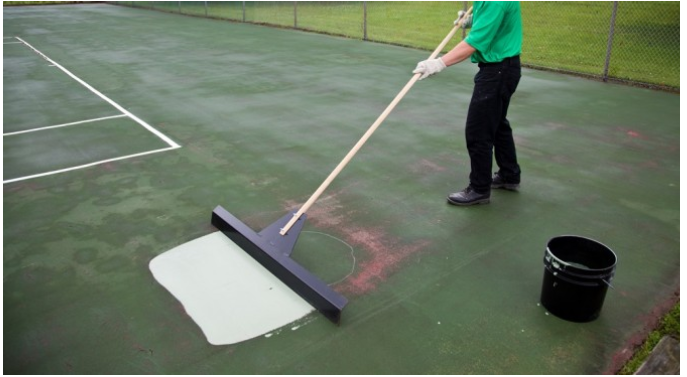As pickleball continues to grow in popularity, maintaining the condition of pickleball courts is vital for ensuring optimal playability and safety. This article explores the importance of pickleball court repair, key repair considerations, and best practices to keep your courts in top shape.
The Importance of Pickleball Court Repair
Pickleball courts endure significant wear and tear due to regular use and exposure to various weather conditions. Proper maintenance and timely repairs are essential to prevent deterioration that can affect gameplay and player safety. Neglecting court repair can lead to surface damage, uneven playing conditions, and potential safety hazards.
A well-maintained pickleball court not only enhances the playing experience but also extends the lifespan of the court surface. Regular inspections and prompt repairs help identify and address minor issues before they escalate into more serious problems, thereby protecting your investment in the court infrastructure.
Common Issues Requiring Pickleball Court Repair
- Surface Cracks and Fading
Over time, pickleball court surfaces can develop cracks due to environmental factors like temperature fluctuations and moisture. These cracks can affect gameplay by creating uneven surfaces that may lead to injuries. Additionally, UV exposure can cause the court’s color to fade, impacting visibility and aesthetics. - Potholes and Surface Degradation
Potholes can form due to erosion or underlying structural issues, leading to uneven playing conditions. Surface degradation can also occur from heavy use, which can compromise the court’s integrity and performance. - Net and Post Damage
The net and posts are crucial components of a pickleball court. Wear and tear or accidental damage can lead to misalignment or structural issues, affecting the overall quality of play. - Drainage Problems
Proper drainage is essential to prevent water accumulation on the court, which can lead to surface damage and playability issues. Poor drainage can cause puddles and uneven surfaces that must be addressed through repair.
Pickleball Court Repair: Key Considerations
- Assessment and Inspection
Before initiating any repairs, conduct a thorough inspection of the court to assess the extent of the damage. Identify cracks, potholes, fading, and other issues that need attention. This initial assessment will guide the repair process and help determine the appropriate solutions. - Choosing the Right Materials
Selecting high-quality repair materials is crucial for effective pickleball court repair. Use specialized court repair compounds, sealants, and paints designed for outdoor sports surfaces. These materials should be durable, weather-resistant, and compatible with the existing court surface. - Repair Techniques
- Crack Filling: For surface cracks, clean the area thoroughly and use a crack filler or sealant. Ensure the filler is applied evenly and allow adequate curing time before resuming use.
- Pothole Repair: Remove loose debris from potholes and fill them with a suitable patching material. Compact the patch and smooth the surface to blend with the surrounding area.
- Surface Resurfacing: For significant surface degradation, resurfacing may be necessary. This involves applying a new layer of surface material to restore the court’s condition and improve playability.
- Regular Maintenance
Implementing a regular maintenance schedule is essential to prevent major repairs. Routine tasks include cleaning the court, inspecting for damage, and addressing minor issues promptly. Regular maintenance helps preserve the court’s condition and ensures a safe and enjoyable playing environment.
Best Practices for Pickleball Court Repair
- Professional Evaluation
Engage a professional with expertise in pickleball court construction and repair to evaluate and address significant issues. Professionals can provide accurate assessments and recommend effective solutions tailored to your court’s specific needs. - Timely Repairs
Address issues as soon as they are identified to prevent further damage. Delaying repairs can lead to more extensive problems and increased repair costs. - Invest in Quality
Invest in high-quality repair materials and services to ensure long-lasting results. Quality repairs contribute to a better playing experience and reduce the frequency of future repairs. - Follow Manufacturer Guidelines
Adhere to manufacturer guidelines for repair materials and techniques to achieve optimal results. Proper application and maintenance according to these guidelines will enhance the effectiveness of your repairs.
Conclusion
Effective pickleball court repair is essential for maintaining the quality, safety, and enjoyment of the game. By addressing common issues promptly, choosing the right materials, and implementing regular maintenance, you can ensure your pickleball court remains in excellent condition. Investing in proper repair and maintenance practices not only extends the lifespan of the court but also enhances the overall playing experience for all users.





